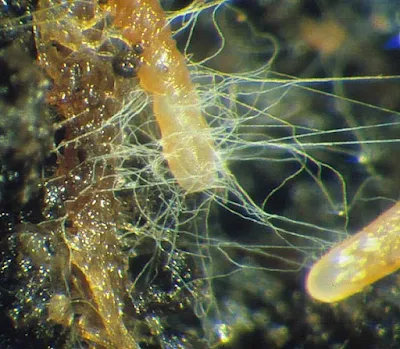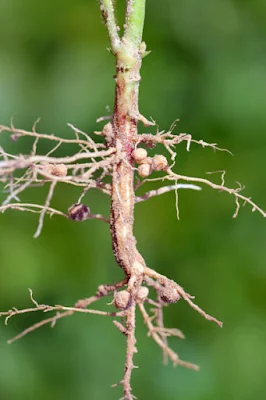Microorganisms in Abiotic Stress Mitigation
As an agriculture microbiologist me and my team working on developing
microbial products for abiotic stress mitigation. We mainly work in salinity
stress alleviation in crops through microbes. We developed some microbial-based
products that significantly enhance salinity tolerance in crops. In this blog,
I am going to explain how microorganisms work on abiotic stress mitigation. Plant
growth-promoting (PGP) microorganisms have been shown to actively induce the
synthesis and increase in the levels of antioxidant enzymes, accumulation of
osmolytes, and expression of different Stress-responsive genes. A variety of PGP
bacteria, fungi, and actinomycetes, either individually or in the consortium
form, have been demonstrated for their plan-beneficial interactions with
abiotically stressed environments.
Drought tolerance: Plant growth-promoting microorganisms such as Rhizobium, Azotobacter, Azospirillum, Pseudomonas, and mycorrhizal fungi form beneficial associations with plant roots. These PGPR can enhance plant tolerance to drought stress by producing stress-related hormones, such as abscisic acid, which regulates plant water balance and stomatal closure. They can also stimulate the development of a more extensive root system, improving water uptake by plants. Under drought stress conditions, the level of ethylene in higher plants is increased. ACC deaminase-producing microbial strains enable plant growth, by lowering the levels of ethylene. Ethylene can affect all stages of plant development such as plant tissues like roots, stems, leaves, flowers, and fruits. Microorganisms produce osmolytes, such as proline and glycine betaine, which help plants maintain cellular water potential and osmotic balance, thereby protecting them from dehydration. They also produce exopolysaccharides that bind soil particles, improving soil structure and water-holding capacity. Additionally, microorganisms can stimulate the closure of stomata, reducing water loss through transpiration. Plant growth-promoting rhizobacteria (PGPR) and mycorrhizal fungi form symbiotic relationships with plant roots. These microorganisms can improve water uptake by plants by increasing root surface area and enhancing root hair development.
Salinity tolerance: Salinity stress, caused by high soil salt concentrations, can negatively impact plant growth. Some microorganisms, particularly halotolerant bacteria, and fungi, can help alleviate salinity stress in plants. High salt concentrations can induce oxidative stress in plants by generating reactive oxygen species (ROS), which can damage cellular components. Microorganisms associated with plant roots can enhance antioxidant enzyme activity in plants, such as superoxide dismutase, catalase, and peroxidase. These enzymes scavenge ROS and protect plant cells from oxidative damage, improving plant survival under salinity stress. Microorganisms can produce osmoprotectants, such as glycine betaine, proline, and trehalose, which help plants maintain cellular osmotic balance and prevent water loss under high salinity conditions. These osmoprotectants act as compatible solutes, protecting plant cells from dehydration and maintaining cellular functions. Some microorganisms, particularly halotolerant bacteria, and fungi, have the ability to reduce soil salinity. They do so by metabolizing and transforming salt compounds, such as sodium chloride (NaCl), into less harmful forms. This salt reduction activity helps alleviate the osmotic stress caused by high salt concentrations in the soil, making it more favorable for plant growth.
Role of Chemical Compounds in Abiotic Stress Mitigation
Phytohormone production: Generally
the majority of the auxin-producing bacteria produce IAA, while some of the
other bacteria produce GA3 and other derivatives. which regulate various aspects
of plant growth and development. Cytokinin-producing bacterial strains can also
improve growth under drought stress. These hormones can help mitigate the
adverse effects of salinity stress on plants by promoting root growth,
stimulating cell division, and improving nutrient uptake. They also play a role
in maintaining plant water balance and decreasing the harmful impacts of
abiotic stress. Microbial gibberellin production can help plants overcome the
growth inhibition caused by abiotic stresses like cold temperatures or high
salt concentrations. By promoting shoot elongation and other growth processes.
Microbial
IAA production promotes root growth, enhances nutrient uptake, and improves
overall plant vigor. These effects help plants cope with various abiotic
stresses, including drought, salinity, and nutrient deficiencies. The
production of these phytohormones by beneficial microorganisms helps plants
modulate their physiological processes, adapt to adverse environmental
conditions, and mitigate the negative effects of abiotic stresses.
Nutrient availability and
uptake: Microorganisms involved in nutrient cycling and mineralization
processes. Most of the nutrient cycles like Nitrogen, phosphorus, and Sulphur
depend on microbial activity in the soil. They break down organic matter and
convert complex nutrients into readily available forms for plants. Many
microbial strains have been described in the literature for their exceptional ability
to fix atmospheric nitrogen under an abiotic stress environment. Phosphate solubilization is another important trait of plant
growth-promoting microbes. This trait is typically attributed to the organic
acids produced by microbes as metabolic products. The enzyme phytase has also
been shown to have a significant role in phosphorus mobilization. This
improves nutrient uptake and utilization efficiency, facilitating plants to
cope with nutrient deficiencies triggered by abiotic stresses. Microorganisms,
particularly mycorrhizal fungi, form symbiotic associations with plant roots,
enhancing nutrient uptake efficiency.
In conclusion, it’s
important to note that the efficacy of these Microorganisms may vary dependent
on the specific crop, environmental conditions, and application methods.
Therefore, the appropriate selection and application of these Microorganisms should
be based on scientific research and local environments. Furthermore, microbial
inoculants and biofertilizers containing beneficial microorganisms have been
developed to improve abiotic tolerance in agricultural systems. These products
can be applied to seeds, roots, or the surrounding soil to establish beneficial
microbial communities and promote abiotic resilience in crops. In my
experience, very few microbial products are really working in field conditions,
so check product quality and efficiency before applying them in the field.






